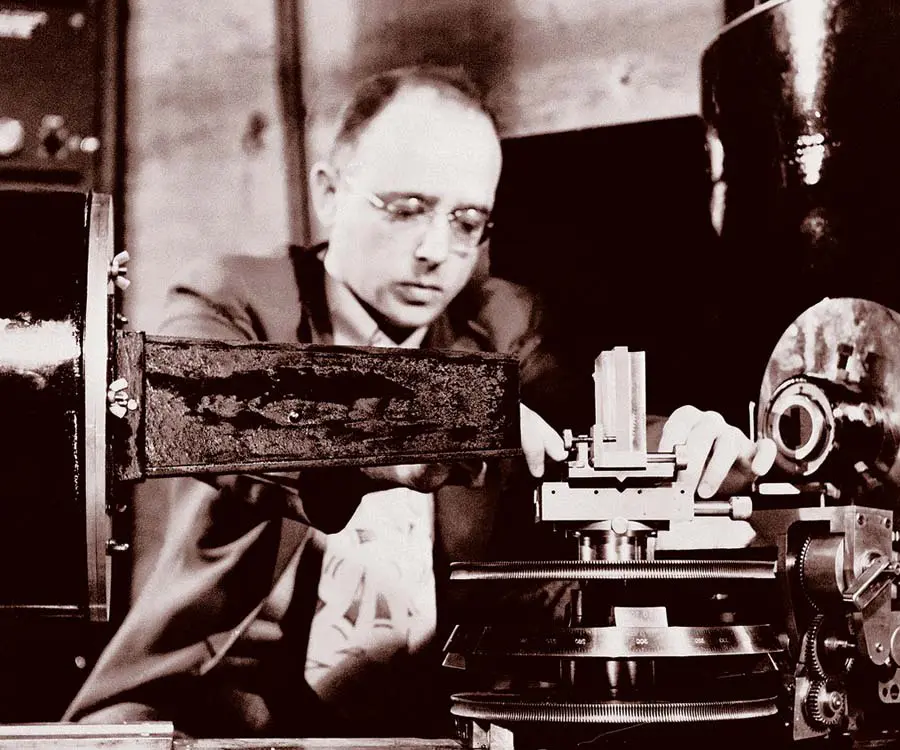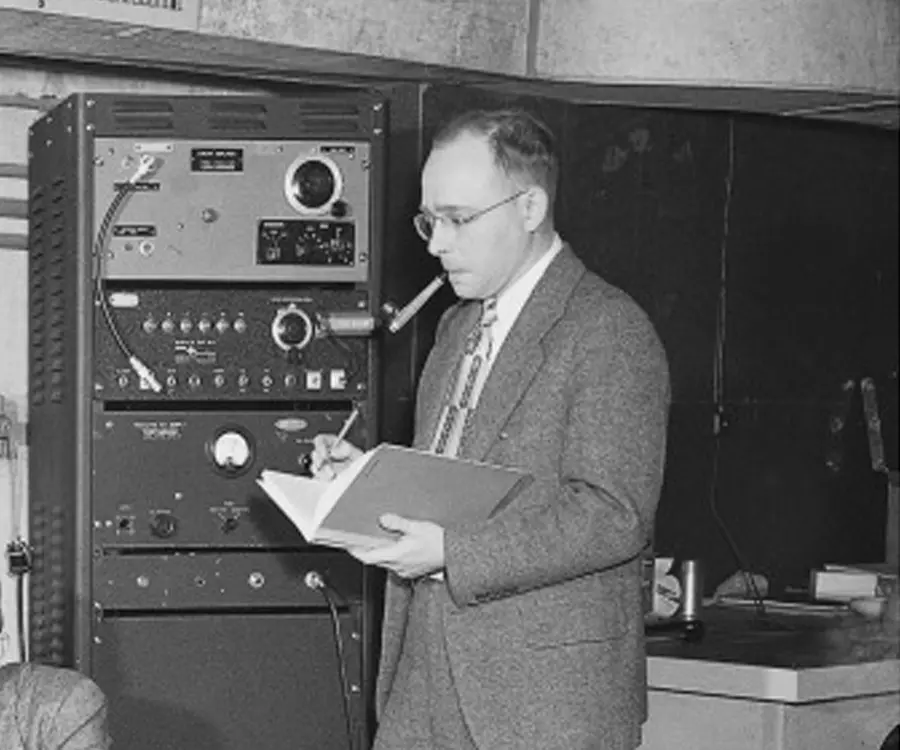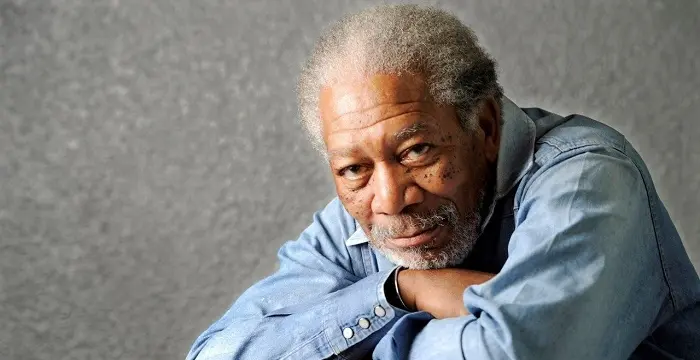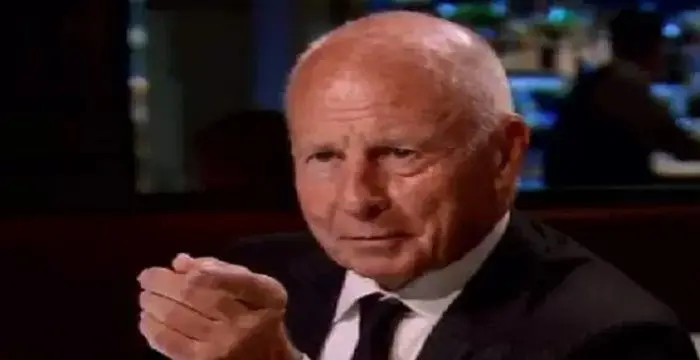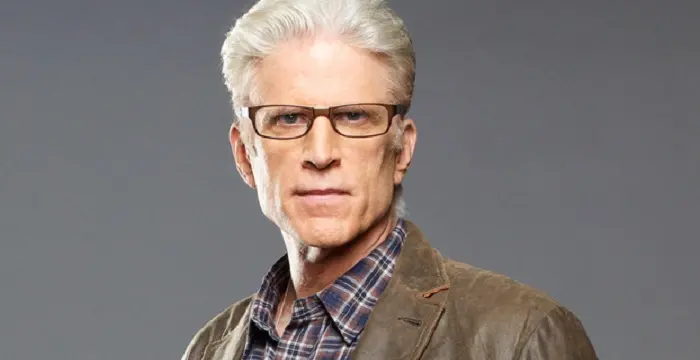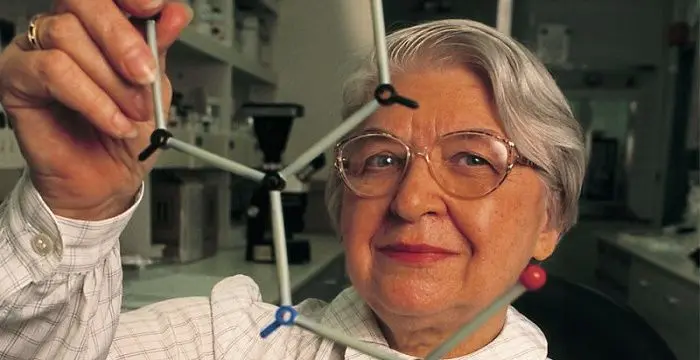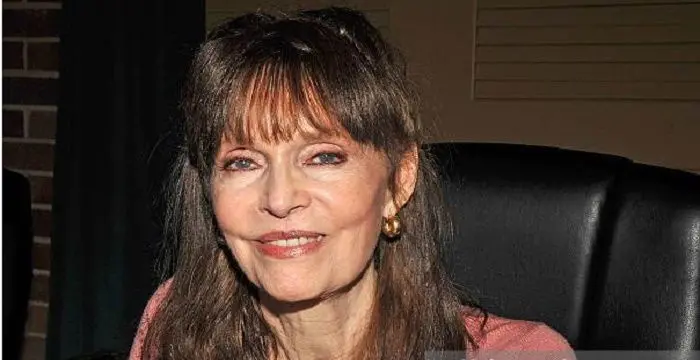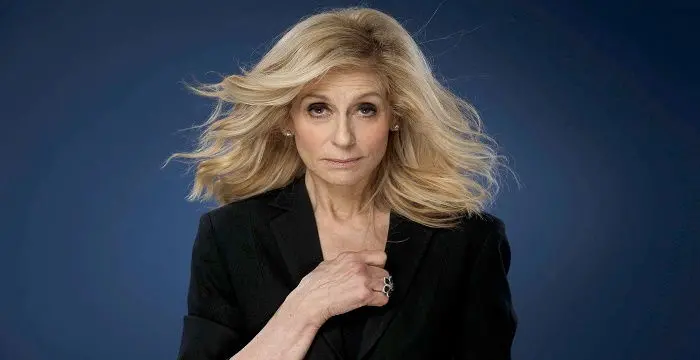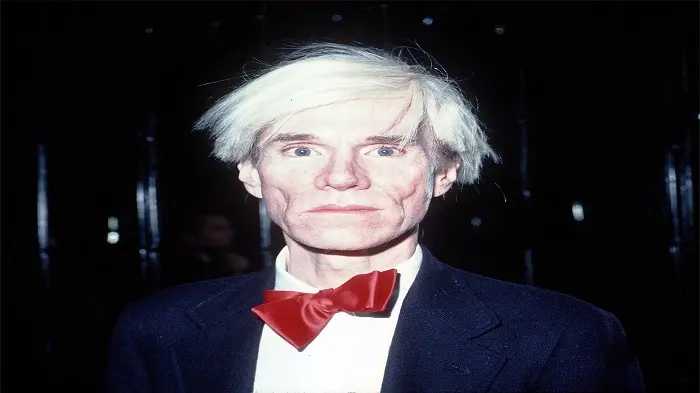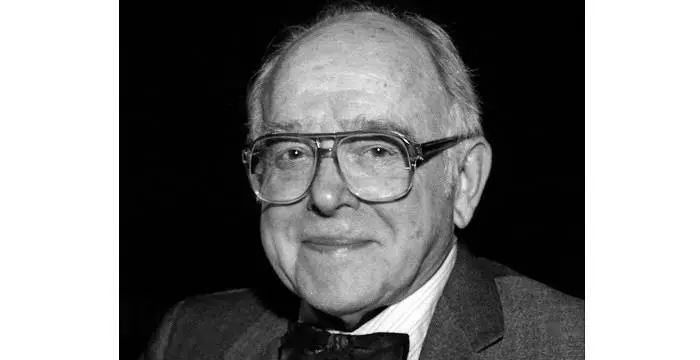
Clifford Shull - Physicists, Family and Family
Clifford Shull's Personal Details
Clifford Glenwood Shull was a well-known U.S
| Information | Detail |
|---|---|
| Birthday | September 23, 1915 |
| Died on | March 31, 2001 |
| Nationality | American |
| Famous | Carnegie Mellon University, New York University, Scientists, Physicists |
| Spouses | Martha-Nuel Summer |
| Childrens | John C. Shull, Robert D. Shull, William F. Shull |
| Universities |
|
| Notable Alumnis |
|
| Birth Place | Pittsburgh, Pennsylvania |
| Gender | Male |
| Father | David Shull |
| Mother | Daisy Shull |
| Sun Sign | Virgo |
| Born in | Pittsburgh, Pennsylvania |
| Famous as | Physicist |
| Died at Age | 85 |
// Famous Scientists
Juliane Koepcke
Juliane Koepcke is a German-Peruvian biologist, who was the lone survivor among the 92 passengers and crew of the ill-fated LANSA Flight 508 that crashed in the Peruvian rainforest on 24 December 1971. Know more about her life in this biography.
Henry Cavendish
Henry Cavendish was a theoretical chemist and physicist, renowned for discovery of hydrogen and calculation of the mass of earth. To know more about his childhood, profile, timeline and career read on
Konstantin Tsiolkovsky
Konstantin Tsiolkovsky was a Russian rocket scientist and a pioneer of astronautics. This biography provides detailed information about his childhood, family, personal life, career, achievements, etc.
Clifford Shull's photo
Who is Clifford Shull?
Clifford Glenwood Shull was a well-known U.S. physicist and Nobel Laureate. As the youngest child of a middle class businessman, he attended school and college commuting from his home in Pittsburg. Later he moved to New York for a research and teaching job at the New York University. Although he wanted to join the Manhattan Project, he had to spend the war years at the Beacon laboratory working on high-performance aviation fuels and lubricants. After the war, he shifted to Clinton Laboratory, which was later renamed as the Oak Ridge National Laboratory, to work with Ernest Woolen on neutron scattering. Here he developed a technique to probe the molecular structure of materials by bouncing neutrons off them and received his Nobel Prize for it all most half a century later. However, according to his own admission his most satisfying years were spent at Massachusetts Institute of Technology guiding young research students. Here too he continued his work on neutrons and initiated the first neutron diffraction investigations of magnetic materials.
// Famous Physicists
Henry Cavendish
Henry Cavendish was a theoretical chemist and physicist, renowned for discovery of hydrogen and calculation of the mass of earth. To know more about his childhood, profile, timeline and career read on
Walter Kohn
Nobel Laureate Walter Kohn was an Austrian-born American theoretical chemist and physicist. Check out this biography to know about his childhood, life, achievements, works & timeline.
Nikola Tesla
Nikola Tesla was a Serbian-American inventor, best known for his development of alternating current electrical systems. This biography of Nikola Tesla provides detailed information about his childhood, life, achievements, works & timeline.
Childhood & Early Years
Clifford Glenwood Shull was born on September 23, 1915 in Pittsburgh, Pennsylvania. His parents, David and Daisy Shull, came to the city from Perry County of Central Pennsylvania. Here David opened a small business, which later evolved into a hardware store that also offered home repair services.
Clifford had two elder siblings, a sister named Evalyn May, and a brother named Perry Leo. In his Nobel Lecture, Clifford later said that he was the baby of the family and had a very happy childhood.
Clifford began his education in a grade school, located within a few blocks from his home. His junior school was also located within walking distance. However, he had to travel comparatively longer distance when he enrolled at Schenley High School for the last three years of his school education.
Although originally keen on aeronautical engineering he began to develop interest in physics under the influence of his physics master Paul Dysart. Therefore, after passing out in 1933, he enrolled at Carnegie Institute of Technology (now renamed Carnegie Mellon University), Pittsburg with physics as his major.
The institute offered two main advantages. As it was located in Pittsburg, he could commute from home and save some money. He also received half tuition scholarship because of his good academic records.
Equally important was the fact that the institution offered good curricula in physics. Under the influence of Harry Hower, the Head of the Physics Department, his interest in the subject increased manifold.
After graduating from college in 1937, Shull took a research and teaching post at New York University. His job involved laboratory course help and problem assignment grading. However, as his father had already passed away, the teaching helped him to survive in New York.
At the NY University, graduate students were encouraged to join ongoing projects at the department. Clifford joined a nuclear physics group headed by Frank Myers and Robert Huntoon.
Later he assisted Frank Myers and Richard Cox in building a new 400 keV Van de Graaff generator. Once it was built, they used it for repeating the electron-double-scattering (EDS) experiment. As part of the project, he had to collect data and analyze them. The experiment formed a part of his doctoral thesis.
Career
In June 1941, Clifford Shull received his PhD degree from New York University and in July, he joined Texas Company’s research laboratory at Beacon, New York. At that time, the laboratory was trying to develop high-performance aviation fuels and lubricants.
As the USA joined Second World War in December, Shull wanted to join Manhattan Project, where scientists were working to create the atomic bomb. Since the work he was doing was equally important his company did not release him and he had to stay back.
Shull’s work at the Texas Company was interesting. It gave him the opportunity to broaden his knowledge base. Here he learned about crystallography, diffraction process etc. However, a visit to Clinton Laboratory (now Oak Ridge National Laboratory) in Tennessee drew his attention to the new developments in nuclear physics.
Shull joined Clinton Laboratory in 1946. Here he worked with Ernest Woolen, trying to find how technology developed during the war could now be used for the advancement of science. Together they worked for nine years exploring how neutrons produced by nuclear reactors could be used to probe atomic structure.
In 1955, Shull joined Massachusetts Institute of Technology as a faculty member. Here he was happy to guide graduate research students at the MITR-I research reactor. His group carried on a number of experiments using neutron radiation from the reactor.
He retired in 1986. He did some exceptional work in the field of internal magnetization in crystals, development of polarized beam technology, dynamical scattering in perfect crystals and fundamental properties of the neutron.
Major Works
Shull’s most significant research was undertaken while he was working at Clinton Laboratory under Ernest Woolen. Here, he developed a method by which the relative positions of the atoms in the material can easily be deduced. The invention later promoted further research into a wide variety of object such as superconductors and viruses.
He aimed a beam of single-wavelength neutrons, traveling at a specific velocity, at the material under observation. When the neutrons hit the atoms of the material they scattered in a specific pattern, which were recorded on photographic films. Later he analyzed the pattern and by doing so deduced the position of the atom.
Awards & Achievements
In 1994, Clifford Glenwood Shull received the Nobel Prize in Physics jointly with Bertram N. Brockhouse for the development of neutron diffraction technique. In his Nobel speech he acknowledged the contribution of Ernest Woolen. He believed that had Woolen not died early, he too have received the same honor.
Other than the Nobel Prize, Shull was also awarded the Oliver E. Buckley Prize by American Physical Society in 1956 and the Gregori Aminoff Prize by Royal Swedish Academy of Sciences in 1993.
In addition, he was elected to the American Academy of Arts and Sciences in 1956 and to the National Academy of Sciences in 1975.
Personal Life & Legacy
Clifford Shull met Martha-Nuel Summer at New York while he was pursuing his PhD at New York University. They got married in 1941. The couple had three sons, John C. Shull, Robert D.Shull and William F. Shull.
Although he retired in 1986, he remained active for long and continued visiting his laboratory just to watch the students working there. He died on March 31, 2001, at Lawrence Memorial Hospital in Medford, Massachusetts at the age of eighty-five.
’Shull Rocks’, located in Antarctica, has been named after Clifford Shull by the United Kingdom Antarctic Place-Names Committee. It is a chain of snow-covered rocks lying in Crystal Sound about 16 km northwest of Cape Rey, Graham Land.
‘The Clifford G. Shull Prize in Neutron Physics’ has been established in his honor by the Neutron Scattering Society of America.
Oak Ridge National Laboratory, earlier known as Clinton Laboratory, has established ‘Clifford G. Shull Fellowship’ in his honor.
Trivia
The ‘Glenwood’ in Clifford Glenwood Shull’s name comes from the Glenwood locality in Pittsburg, where he was born and brought up.
// Famous New York University
Morgan Freeman
Morgan Freeman is an Academy Award winning actor known for his work in movies like ‘Street Smart’, ‘Driving Miss Daisy’ and ‘Million Dollar Baby’. This biography provides detailed information about his childhood, life, achievements, works & timeline.
Sean Hannity
Sean Hannity is a television host and political commentator best known for the talk show ‘The Sean Hannity Show’. This biography of Sean Hannity provides detailed information about his childhood, life, achievements, works & timeline.
Thomas Girardi
Thomas Girardi is an American attorney who co-founded the law firm, Girardi & Keese. Check out this biography to know about his childhood, family life, achievements and fun facts about him.
Clifford Shull's awards
| Year | Name | Award |
|---|---|---|
Other | ||
| 0 | Oliver E. Buckley Condensed Matter Prize (1956) | |
| 0 | Gregori Aminoff Prize (1993) | |
| 0 | Nobel Prize in Physics (1994) | |
Clifford Shull biography timelines
- // 23rd Sep 1915Clifford Glenwood Shull was born on September 23, 1915 in Pittsburgh, Pennsylvania. His parents, David and Daisy Shull, came to the city from Perry County of Central Pennsylvania. Here David opened a small business, which later evolved into a hardware store that also offered home repair services.
- // 1933Although originally keen on aeronautical engineering he began to develop interest in physics under the influence of his physics master Paul Dysart. Therefore, after passing out in 1933, he enrolled at Carnegie Institute of Technology (now renamed Carnegie Mellon University), Pittsburg with physics as his major.
- // 1937After graduating from college in 1937, Shull took a research and teaching post at New York University. His job involved laboratory course help and problem assignment grading. However, as his father had already passed away, the teaching helped him to survive in New York.
- // 1941Clifford Shull met Martha-Nuel Summer at New York while he was pursuing his PhD at New York University. They got married in 1941. The couple had three sons, John C. Shull, Robert D.Shull and William F. Shull.
- // Jun 1941In June 1941, Clifford Shull received his PhD degree from New York University and in July, he joined Texas Company’s research laboratory at Beacon, New York. At that time, the laboratory was trying to develop high-performance aviation fuels and lubricants.
- // 1946Shull joined Clinton Laboratory in 1946. Here he worked with Ernest Woolen, trying to find how technology developed during the war could now be used for the advancement of science. Together they worked for nine years exploring how neutrons produced by nuclear reactors could be used to probe atomic structure.
- // 1955In 1955, Shull joined Massachusetts Institute of Technology as a faculty member. Here he was happy to guide graduate research students at the MITR-I research reactor. His group carried on a number of experiments using neutron radiation from the reactor.
- // 1956 To 1993Other than the Nobel Prize, Shull was also awarded the Oliver E. Buckley Prize by American Physical Society in 1956 and the Gregori Aminoff Prize by Royal Swedish Academy of Sciences in 1993.
- // 1956 To 1975In addition, he was elected to the American Academy of Arts and Sciences in 1956 and to the National Academy of Sciences in 1975.
- // 1986He retired in 1986. He did some exceptional work in the field of internal magnetization in crystals, development of polarized beam technology, dynamical scattering in perfect crystals and fundamental properties of the neutron.
- // 1994In 1994, Clifford Glenwood Shull received the Nobel Prize in Physics jointly with Bertram N. Brockhouse for the development of neutron diffraction technique. In his Nobel speech he acknowledged the contribution of Ernest Woolen. He believed that had Woolen not died early, he too have received the same honor.
- // 31st Mar 2001Although he retired in 1986, he remained active for long and continued visiting his laboratory just to watch the students working there. He died on March 31, 2001, at Lawrence Memorial Hospital in Medford, Massachusetts at the age of eighty-five.
// Famous Carnegie Mellon University
Ted Danson
Ted Danson is an American actor, producer and environmental activist. Read this biography to learn more about his childhood, profile, life and timeline.
Carter Sharer
Carter Sharer is an American YouTuber. Check out this biography to know about his birthday, childhood, family life, achievements and fun facts about him.
Stephanie Kwolek
Stephanie Kwolek was an American chemist whose research work led to the development of the synthetic fiber, Kevlar. This biography of Stephanie Louise Kwolek provides detailed information about her childhood, life, achievements, works & timeline.
Barbara Feldon
Barbara Feldon is an American actress, known for her contributions towards television and theatre. This biography of Barbara Feldon provides detailed information about her childhood, life, achievements, works & timeline.
Judith Light
Judith Light is an American actress known for her role in the series ‘One Life to Live.’ Check out this biography to know about her childhood, family life, achievements and fun facts about her.
Andy Warhol
Andy Warhol was a famous American illustrator. This biography of Andy Warhol provides detailed information about his childhood, life, achievements, works & timeline.
Clifford Shull's FAQ
What is Clifford Shull birthday?
Clifford Shull was born at 1915-09-23
When was Clifford Shull died?
Clifford Shull was died at 2001-03-31
Where was Clifford Shull died?
Clifford Shull was died in Medford, Massachusetts
Which age was Clifford Shull died?
Clifford Shull was died at age 85
Where is Clifford Shull's birth place?
Clifford Shull was born in Pittsburgh, Pennsylvania
What is Clifford Shull nationalities?
Clifford Shull's nationalities is American
Who is Clifford Shull spouses?
Clifford Shull's spouses is Martha-Nuel Summer
Who is Clifford Shull childrens?
Clifford Shull's childrens is John C. Shull, Robert D. Shull, William F. Shull
What was Clifford Shull universities?
Clifford Shull studied at Carnegie Mellon University,New York University, Carnegie Mellon University, New York University, Schenley High School, Carnegie Mellon College of Engineering
What was Clifford Shull notable alumnis?
Clifford Shull's notable alumnis is Carnegie Mellon University, New York University
Who is Clifford Shull's father?
Clifford Shull's father is David Shull
Who is Clifford Shull's mother?
Clifford Shull's mother is Daisy Shull
What is Clifford Shull's sun sign?
Clifford Shull is Virgo
How famous is Clifford Shull?
Clifford Shull is famouse as Physicist



